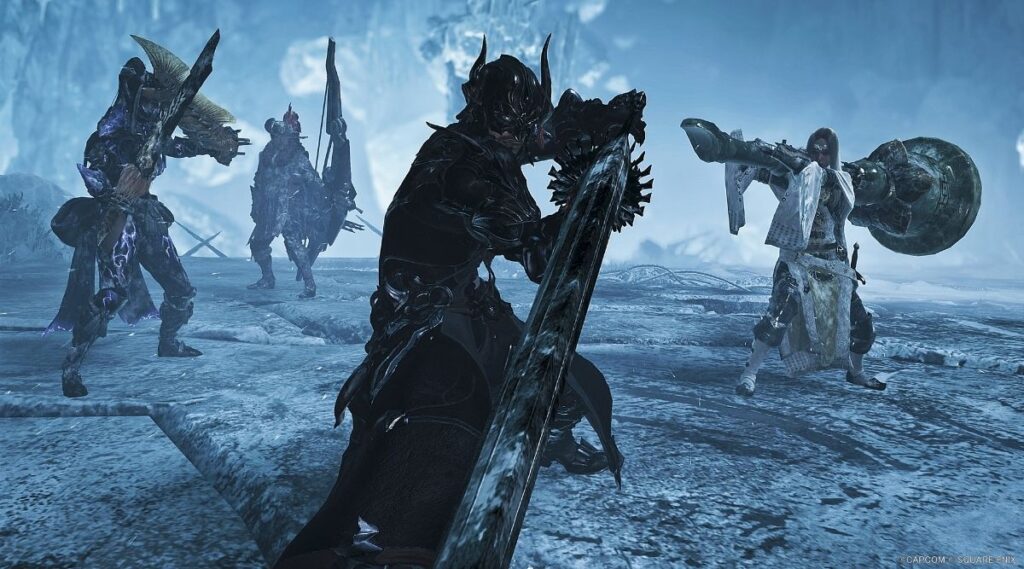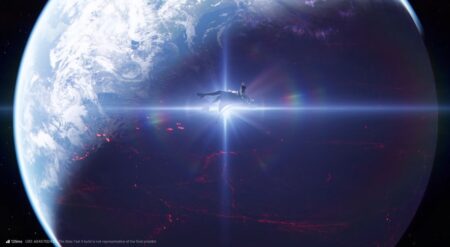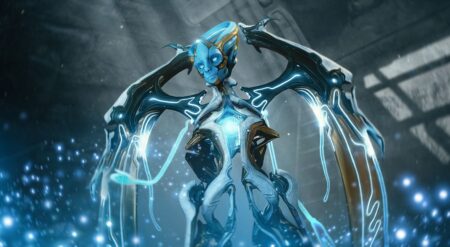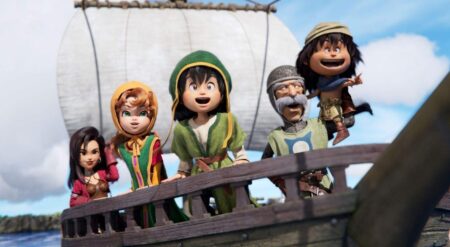The Monster Hunter series has never shied away from big crossover moments, but the Final Fantasy XIV collaboration in Monster Hunter Wilds is easily one of its most ambitious. Set to launch in October, the Monster Hunter Wilds × Final Fantasy XIV isn’t just a cosmetic tie-in or a novelty quest.
After going hands-on with a four-player boss fight on PlayStation 5 during Tokyo Game Show by the Bay 2025, it became clear this isn’t just Monster Hunter with a Final Fantasy skin. It’s something bigger. It’s Monster Hunter borrowing the bones of an MMORPG raid and making it its own.
If you’re expecting another standard Wilds hunt, load in, chip away at health, dodge a few tells, think again. This fight was brutal. Even talking with developers afterward, only a handful had managed to beat the Omega Planetes during the show. Our group of four didn’t. And yet, that challenge was the hook.
Monster Hunter Wilds × Final Fantasy XIV encounters feel like true raid bosses.
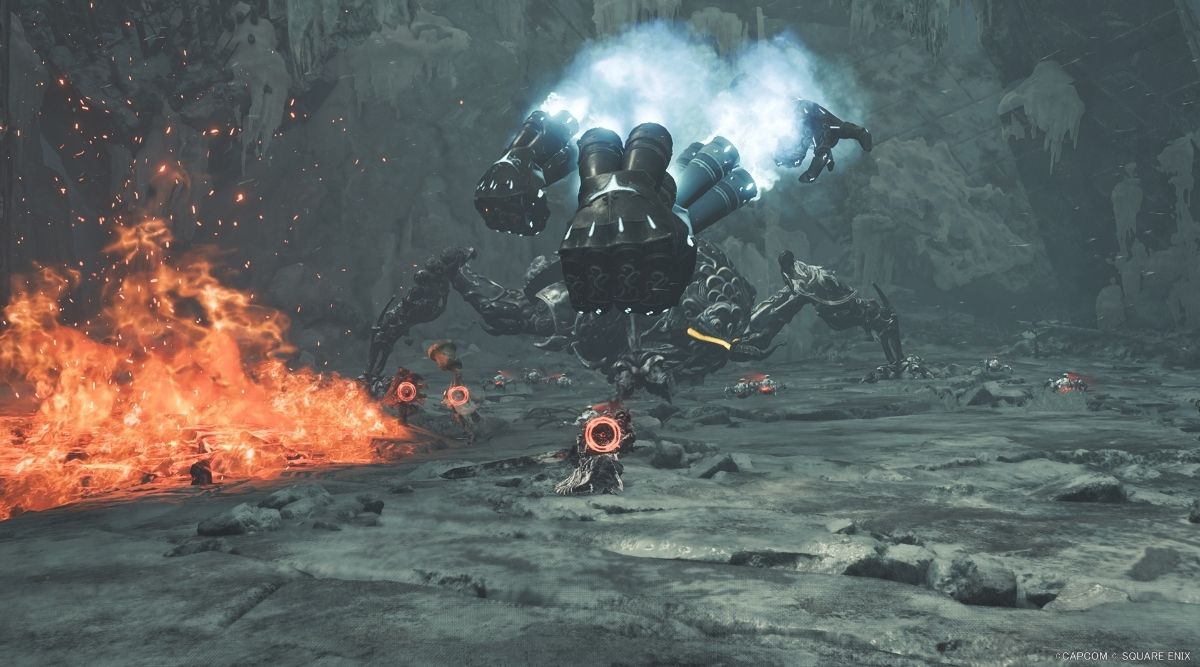
Unlike a traditional Monster Hunter encounter that can sometimes lean into “tank and spank,” this fight demanded true coordination. The boss had raid-like phases, dumping out massive AoE attacks that wiped careless hunters in seconds. Blocking and dodging weren’t luxuries; they were survival skills.
One moment, it would leap into the air, crashing down with frightening speed, and the next, it would launch a giant fist across the arena. Time your counter right, and you could smack it back for a satisfying punishment. Miss it, and you were on the floor.
What struck me most is that even when the boss wasn’t targeting you directly, there was always something to do: breaking parts, helping control aggro, or supporting teammates. Tanks couldn’t just plant their feet; they had to roll, sprint, and react as much as any DPS. It felt like a living raid encounter with roles that mattered, and every hunter had a job beyond simply swinging until the health bar dropped.
Crossovers can sometimes feel like marketing fluff, but this isn’t one of them. The Final Fantasy XIV DNA runs deep here. Aggro mechanics mattered. If one player held the boss’s attention too long, they’d be punished, forcing the group to trade responsibility mid-fight.
Coordination is essential in Monster Hunter Wilds × Final Fantasy XIV
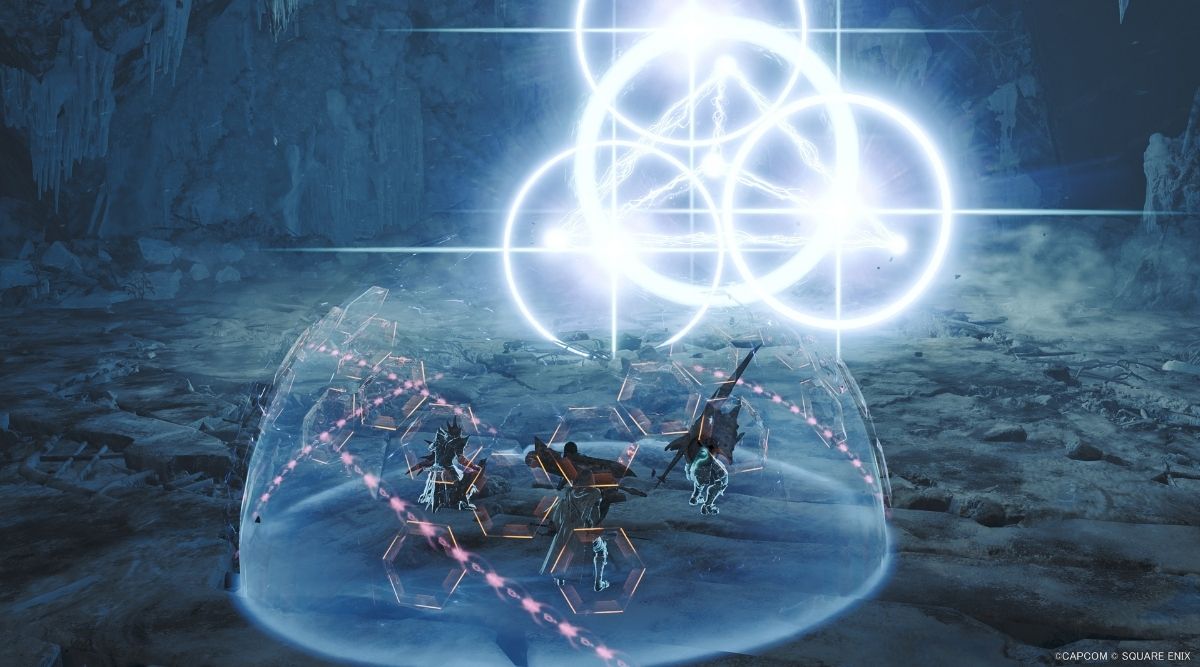
At the same time, Wilds’ part-break system was still present. Focusing on the legs could slow the monster, grounding its leaps, while breaking other points shifted its attack patterns. That blend of MMO raid design and classic Monster Hunter strategy made every attempt feel different, and every failure a learning experience.
When we wiped, it wasn’t because we didn’t deal enough damage; it was because we weren’t coordinating, weren’t swapping aggro properly, we weren’t capitalizing on openings, and most importantly, we didn’t get out of the red nearly enough. That’s the raid mentality. Fail, regroup, adjust, and try again. And with the ability to tweak loadouts between attempts, there was a natural rhythm of experimentation.
One of the smartest systems on display in the Monster Hunter Wilds × Final Fantasy XIV raid was how the game handled interruptions. During our local session, a connection drop split the party. Normally, that would mean disaster. Instead, AI-controlled hunters seamlessly filled the gap, keeping the fight going even if we couldn’t reconnect. That safety net, combined with how easy it was to form a local lobby and drop back in, gave the whole experience an approachability that counterbalanced its punishing difficulty.
You’ll have to experiment to find the right mix of strategies if you want to succeed.
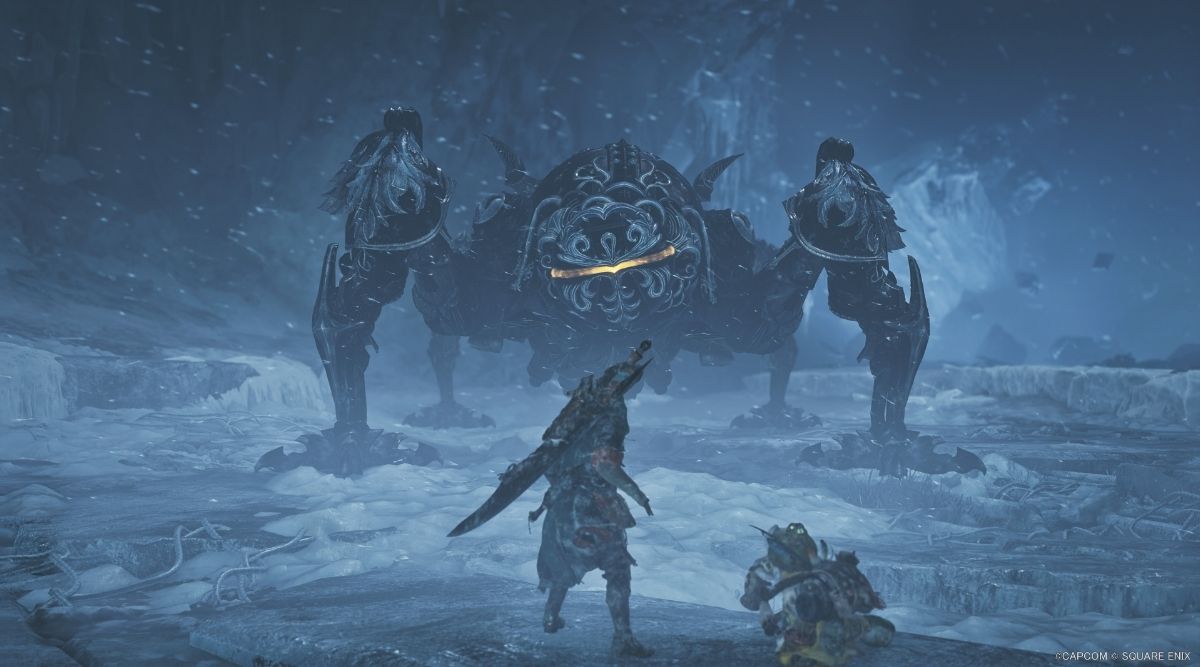
If there’s one thing Wilds has always excelled at, it’s loadout diversity, and the Monster Hunter Wilds × Final Fantasy XIV crossover doubled down on that. Success wasn’t just about one perfect loadout. It was about having a variety of roles at the table. Someone had to manage aggro and absorb the occasional hit. Others had to focus on damage while opportunistically breaking parts. Supportive builds mattered, too, keeping the team alive through devastating bursts.
Sheilds, potions, armor sets, and weapon swaps suddenly felt more vital than ever. This wasn’t about grinding until the boss fell over. It was about communication, experimentation, and finding the right mix of strategies. The crossover didn’t push aside the customization depth that defines Monster Hunter; it was amplified. The paths to victory feel within reach with more time and coordination, which was a win in our book.
I’ll admit it: I’m not a hardcore Final Fantasy XIV veteran, and I’m not deep into Monster Hunter Wilds either. However, this collaboration impressed me as a fan of MMORPGs. It’s far from just a gimmick. It’s a full-bodied Monster Hunter Wilds × Final Fantasy XIV that brings MMO raid mechanics into Monster Hunter’s ecosystem without losing what makes the franchise special.
This is an exceptionally difficult boss that will not be easy for newcomers.
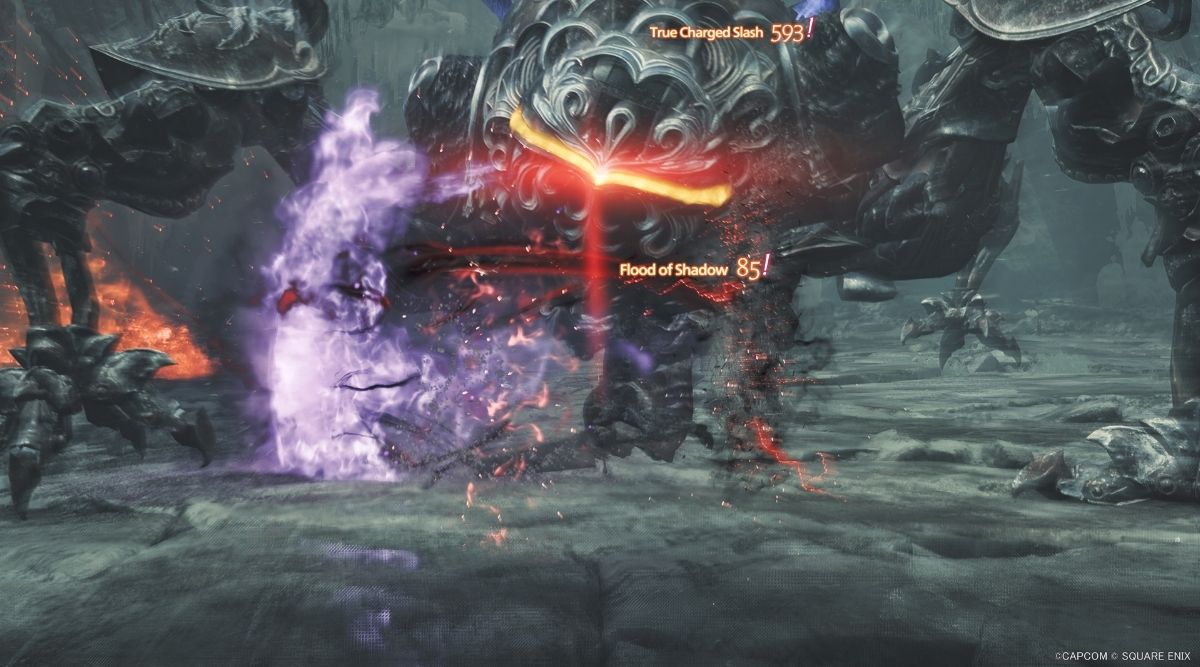
The difficulty may deter some players; this is not an easy fight for newcomers. But for groups willing to communicate, experiment, and lean into the raid loop of trial and error, the crossover feels like it could be one of the highlights of Wilds’ post-launch support for Capcom.
We didn’t beat the boss. Not even close. But the urge to go back, to tweak my build, to rally the party and try again: that’s what tells me this collaboration works. For Wilds fans, for FFXIV players, and for anyone who loves tough, cooperative fights, Monster Hunter Wilds × Final Fantasy XIV is shaping up to be something special.

